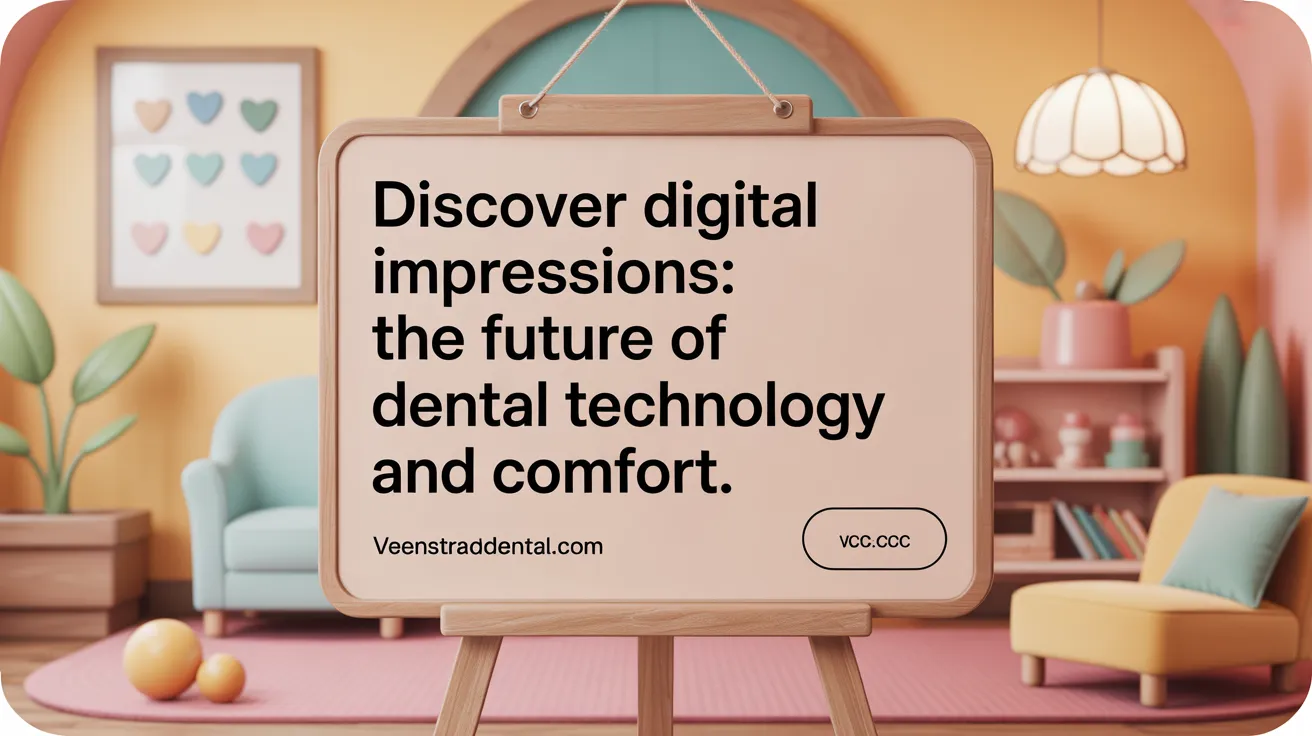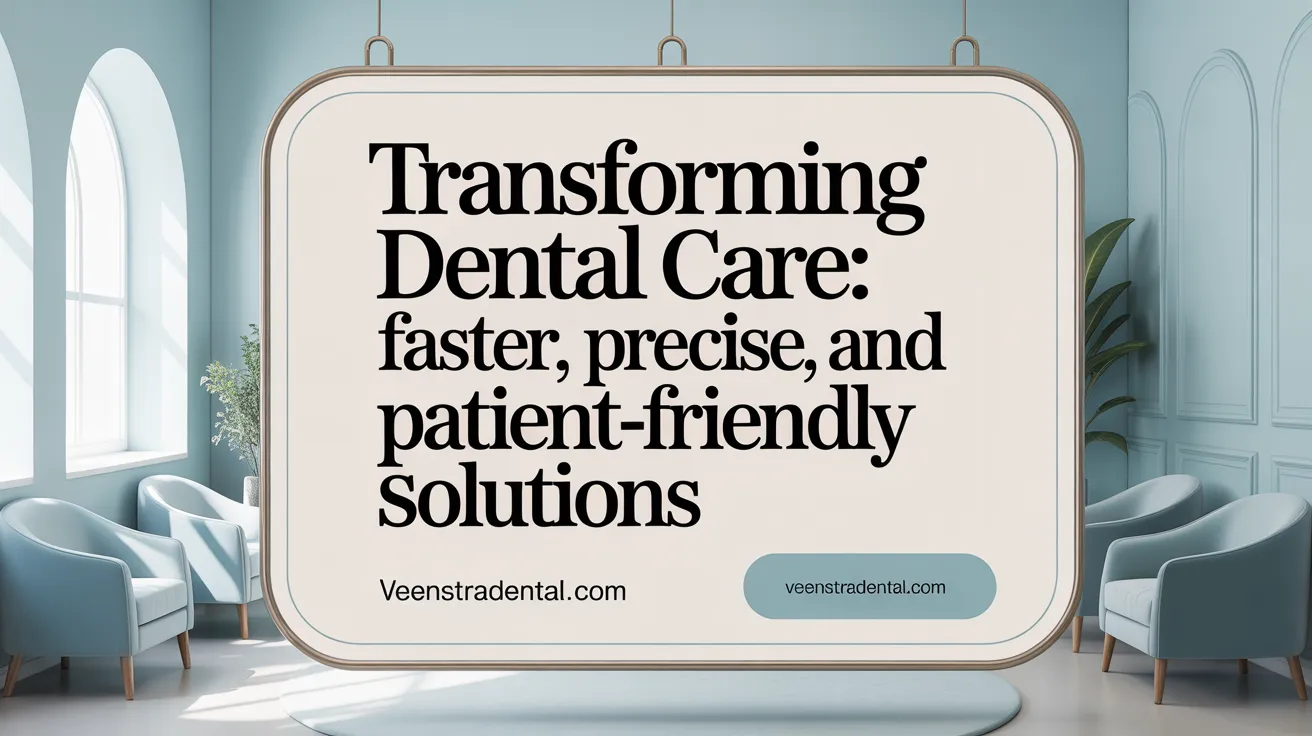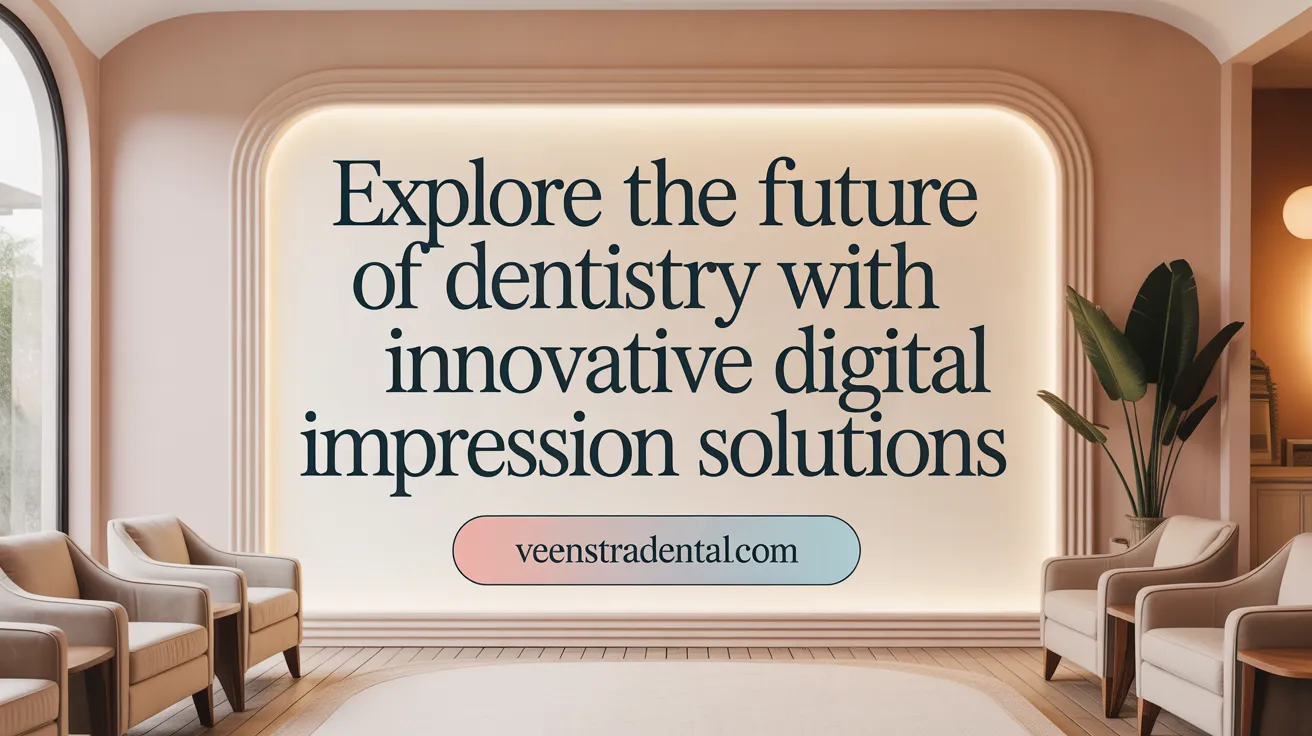Understanding Digital Impressions in Modern Dentistry
Digital impressions are transforming the way dental professionals capture and utilize detailed images of the oral cavity. By replacing traditional messy molds with fast, accurate, and patient-friendly scanning technology, digital impressions contribute to faster, more precise dental treatments. This article explores the technological advancements behind digital impressions, their benefits for both patients and clinicians, clinical outcomes, and future trends shaping the dental field.
What Are Digital Impressions and Their Uses in Dentistry?

What is a digital impression and what is it used for in dentistry?
A digital impression in dentistry is a virtual, computer-generated replica of a patient's oral tissues created using intraoral scanners that employ lasers or optical imaging technology. It captures highly detailed 3D images of teeth and soft tissues rapidly—often within a few minutes—eliminating the need for traditional impression materials.
This advanced technology allows dentists to obtain precise digital models instantly, which can be reviewed and adjusted immediately. The digital data is then electronically sent to dental laboratories for the fabrication of various restorations such as crowns, bridges, and dentures. Additionally, it plays a crucial role in orthodontic planning, implant placement, and monitoring dental health over time.
Compared to traditional molds, digital impressions improve accuracy, reduce patient discomfort, and streamline the workflow. They eliminate the mess and gag reflex issues associated with using impression trays filled with gooey materials. Instead, small, non-invasive intraoral scanners quickly capture thousands of detailed images, providing a comfortable experience, especially for patients with sensitivities or anxiety.
The use of digital impressions results in faster treatment times, fewer adjustments, and higher-quality outcomes. This innovative approach is increasingly adopted in modern dentistry, offering precise, safe, and more patient-friendly solutions for a wide array of dental procedures.
How does the technology work?
At the core of digital impressions are intraoral scanners, which use laser or optical light technology to create detailed 3D images. These devices emit light onto teeth and soft tissues, capturing thousands of images almost instantly.
The scanner then processes these images to assemble an accurate digital model of the patient's mouth. This model can be viewed on a computer screen immediately, allowing for real-time assessment and adjustments.
These digital impressions can be sent directly to dental labs for the rapid manufacturing of restorations, contributing to same-day procedures like crowns and veneers. Overall, the technology enhances precision, reduces errors, and improves communication between dental providers and labs.
Applications in different areas of dentistry
Digital impressions are versatile tools used across multiple dental disciplines:
- Restorative dentistry for crowns, bridges, and veneers.
- Orthodontics, especially with clear aligner treatments like Invisalign.
- Dental implant planning and guided surgery.
- Preventive dentistry for monitoring wear, caries, and deformities.
- Fabricating personalized mouth guards and splints.
This broad range of applications underscores their importance in providing accurate, efficient, and comfortable care.
Comparison with traditional impression methods
| Aspect | Digital Impressions | Traditional Impressions | Differences & Benefits |
|---|---|---|---|
| Material used | Digital scans via intraoral scanners | Physical impression materials like alginate or silicone | Digital scans eliminate messy materials and reduce gag reflex triggers |
| Speed | Few minutes; instant data transfer | 10-15 minutes or longer; physically sent to labs | Faster, more efficient workflow |
| Comfort | Highly comfortable, non-invasive | Often uncomfortable, messy, may cause gagging | Improved patient comfort, especially for sensitive or anxious patients |
| Accuracy | Equal or greater than traditional methods; minimal errors | Susceptible to distortions, bubbles, and inaccuracies | Higher precision leads to better-fitting restorations |
| Error reduction | Reduced human error with reference points | Higher chance of distortions and errors | Overall enhanced reliability |
| Storage & sharing | Electronic files stored digitally | Physical models require space and handling | Easier storage, sharing, and record keeping |
| Environmental impact | Eco-friendly, less waste | Uses disposables with waste generation | More sustainable practice |
In conclusion, digital impression technology is transforming dental care by making procedures faster, more precise, and more comfortable. As costs decrease and software advances, its adoption is expected to grow, further benefiting both practitioners and patients.
Speed and Efficiency: How Digital Impressions Accelerate Dental Work

How long do digital dental impressions take compared to traditional methods?
Digital dental impressions are generally much quicker than traditional techniques. While traditional impressions involve the application of sticky, goopy materials and can take around 15 minutes to set, digital impressions typically take between 5 to 10 minutes, depending on how complex the case is and the experience of the practitioner. Skilled users can capture a full-arch scan in as little as 40 seconds, making the process swift and convenient.
The procedure involves a handheld scanner that swiftly moves inside the patient’s mouth, capturing thousands of detailed images per second. These images are processed instantly into a precise 3D digital model, which is ready for review right away. This rapid collection reduces the time patients spend in the chair significantly, streamlining dental workflows.
Overall, digital impressions save valuable time for both the dentist and patient, compared to the longer, messier traditional methods.
Advantages and Clinical Outcomes with Digital Impressions

What are the advantages of digital impressions in dentistry?
Digital impressions provide many clinical and patient-centered benefits. They use advanced 3D scanning technology to capture precise images of teeth and gums, greatly reducing errors often seen with traditional impression materials. The scans are quick, non-invasive, and highly comfortable, taking as little as 40 seconds, which makes the process less stressful for patients. This speed improves workflow efficiency, enabling instant data transmission to dental labs, which shortens the overall treatment timeline.
Communication among dental teams is enhanced through digital files that are easy to share, review, and store electronically. Moreover, digital impressions eliminate the mess of goopy impression materials, reduce cross-infection risks, and are more environmentally friendly due to decreased waste.
Overall, these technology-driven advantages lead to more accurate restorations, fewer remakes or adjustments, and streamlined procedures that elevate the quality of dental care.
Are digital dental impressions more accurate than traditional ones?
Yes, digital impressions are generally more precise than traditional methods. They produce high-resolution 3D images that allow for thorough evaluation before sending to the laboratory. This accuracy stems from optical and laser scanning technologies that capture thousands of detailed reference points, ensuring highly detailed and consistent models.
Unlike traditional impressions, digital scans can be reviewed immediately on screen, allowing for quick corrections if needed. The enhanced accuracy supports better-fitting crowns, veneers, bridges, and orthodontic appliances, leading to improved longevity and aesthetic outcomes.
While traditional impressions remain relevant for certain large cases like full arches or implants, digital impressions are often preferred due to their superior precision, comfort for patients, and efficiency.
How do digital impressions improve the outcomes of dental procedures?
Digital impressions contribute significantly to improved dental treatment outcomes. Their precise 3D imaging guarantees better marginal fit and occlusion in restorations, which minimizes gaps that could lead to decay or failure. This precise fit enhances the durability and aesthetic appeal of restorations like crowns and veneers.
They also streamline the workflow by enabling faster treatment planning, digital collaboration with laboratories, and same-day fabrication in some cases. Patients benefit from increased comfort, with less gagging and fewer chair-side adjustments, resulting in higher satisfaction.
The technology supports more accurate implant placement and orthodontic planning, ultimately leading to longer-lasting and more natural results. By reducing errors, adjusting fewer restorations, and optimizing treatment precision, digital impressions markedly improve the overall success rate and quality of dental procedures.
Technological Innovations Driving Digital Impression Efficiency
What technological aspects contribute to the efficiency of digital impression systems in dental practice?
Digital impression systems are powered by cutting-edge technological features that significantly enhance their speed and accuracy. Intraoral scanners utilize advanced imaging technologies such as confocal microscopy, active triangulation, and stereo measurement. These methods enable the rapid capture of highly detailed 3D images of teeth and gums.
The handheld scanners are designed for ease of use, allowing dentists to produce full-arch scans in less than a minute in many cases. These devices generate real-time visualizations that help practitioners immediately assess the accuracy of the impressions.
The integration of these scanners with CAD/CAM systems streamlines the entire workflow. Digital data can be instantly transmitted to laboratories for fabrication of restorations, or directly to milling machines, reducing the need for physical molds and shipping delays.
This seamless digital flow minimizes human error, shortens treatment times, and improves patient comfort by eliminating messy impression materials. The technology's continual evolution includes AI-powered enhancements and improved scanning algorithms, making digital impressions even more efficient and user-friendly.
Overall, the combination of high-precision optics, rapid data processing, and integrated workflows accelerates dental procedures and enhances the quality of care.
| Technological Feature | Function | Benefit |
|---|---|---|
| Confocal microscopy | Captures sharp images by focusing on specific depths | Higher detail accuracy |
| Active triangulation | Measures angles of reflected laser light | Faster scanning process |
| Stereo measurement | Uses multiple images for 3D modeling | Precise digital reconstruction |
More information
Search Query: advanced intraoral scanning technology and CAD/CAM dental integration
Wider adoption of these technologies is expected as innovation continues, making digital impressions an increasingly standard part of modern dental practice, improving efficiency and patient outcomes.
Future Trends and Expanding Roles of Digital Impressions in Dentistry

What are the potential future trends and developments in digital impression technology?
Looking ahead, digital impression technology is set to become even more advanced and integrated into routine dental practice. Future improvements include higher scanning accuracy through refined structured light and AI-driven error detection, which will make 3D images more reliable. The incorporation of artificial intelligence and machine learning can automate and streamline workflows, enhancing treatment planning and enabling automated design of restorations.
Moreover, increased compatibility with CAD/CAM systems and more intuitive software interfaces will simplify usage, encouraging wider adoption among dentists. Cloud-based platforms will play a significant role, connecting digital tools and enabling seamless data sharing, better practice management, and tele-dentistry options. Innovations such as 3D and 4D printing, smart dental materials, and bioprinting are also on the horizon. These technologies could facilitate on-site fabrication of restorations and appliances, reducing turnaround times and costs, and opening new possibilities for in-house, customized dental solutions.
Overall, these advancements will make digital impressions more accurate, efficient, and accessible, transforming how dental professionals diagnose, plan, and treat patients.
The Future of Faster, More Comfortable Dental Care
Digital impressions represent a significant leap forward in dental technology, offering faster, more accurate, and comfortable alternatives to traditional impression methods. By leveraging advanced 3D scanning technologies, digital workflows dramatically reduce treatment times, minimize errors, and improve patient outcomes. The integration of these systems into daily practice not only enhances clinical efficiency but also elevates the patient experience through less invasive, cleaner procedures. As innovations like AI, cloud connectivity, and bioprinting continue to evolve, the future promises even greater advances in precision and speed, firmly establishing digital impressions as a cornerstone of modern, patient-centered dentistry.
References
- What are digital impressions and how do they work? – 3Shape Blog
- The Advantages of Digital Impressions in Dentistry
- Digital Impressions: The Future of Dental Impressions - Dr. Sandvick
- What Are Digital Impressions? A Modern Alternative to Traditional ...
- Digital Impressions in Joppa | Enhance Patient Care & Accuracy
- Revolutionizing Dentistry: The Rise of Digital Impressions
- Discover Digital Impressions at Ovation Orthodontics
- Say Goodbye to Putty: How Digital Impressions Work - Williams Dental
